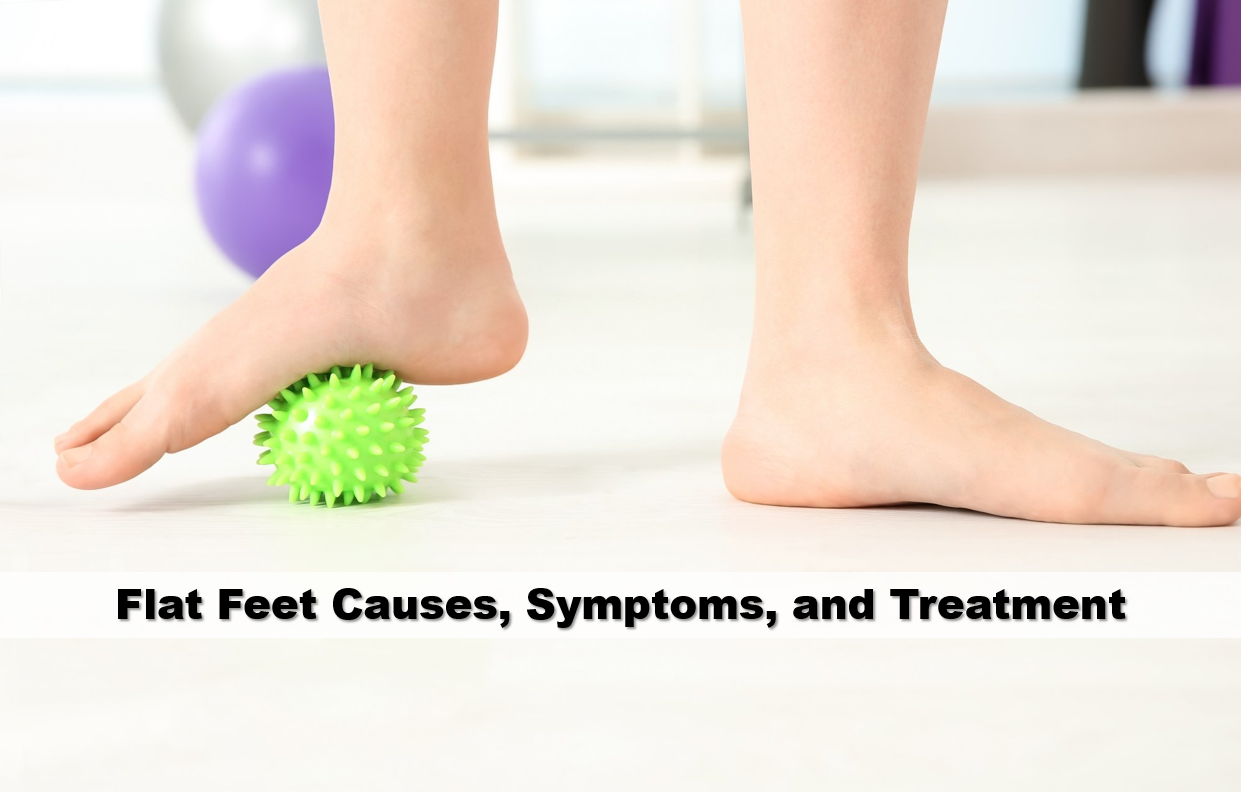Flat Feet Causes, Symptoms, and Treatment

What are flat feet? How do you fix flat feet? There are 26 different bones in the human foot and ankle and many joints that hold these bones together. Besides, tens of muscles, tendons, and ligaments support the foot structure. There are archers which are located in longitudinal of one’s feet. The structure of the foot arches affects one’s walking.
Problems without foot arches are defined as flat feet (pes planus). In the case of flat feet, this feature of the foot which distributes body weight from the three points to the floor deteriorates, and it may cause problems due to biomechanical changes. Here, we will explain flat feet causes, symptoms, diagnosis, and treatment in the text below.
Flat Feet Causes
Congenital anomalies due to genetic factors may lead to flatfoot. It is more likely to occur in families with flat feet. The causes of flat feet can be listed as follow:
- Vertical talus
- Tarsal coalition
- Diseases such as cerebral palsy or muscular dystrophy
- Previous foot trauma
- Advanced age
- Rheumatoid arthritis
- Damage, dysfunction, or rupture of the posterior tibial tendon (failure of the posterior tendon of the tibialis)
- Obesity and diabetes
Flat feet Symptoms
The flat feet, also known as fallen arches, is generally not a problem in children and adults. Flatfooting, which usually does not interfere with sports or any activity, can last until children reach a certain age.
- Pains (The most common symptom in the case of flatfoot is foot pain and calf pain caused by stretched muscles and ligaments. Abnormal stress in the knee and hip can cause pain in these joints.
- Tired Legs
- Stiffness or numbness in feet
- Swollen feet
- Calluses
- Problems with walking or balance
Menopause Causes and Symptoms.
Types of Flat Feet
Flexible Flat Feet: It is the most common type of flatfoot. When a person with flexible flat feet stands, the arches of the foot disappears. In the flexible flat feet, there is no problem with the bone structure, but there is looseness in muscles and ligaments. If there is no genetic predisposition, this may resolve spontaneously after 8-10 years of age.
Rigid Flat Feet: Having no arch in the foot when one stands or not is called rigid flat feet. It may occur as a result of impaired harmony between the foot bones and may cause permanent problems if left untreated. It is rare and may require further examination and treatment. Since there is no foot arch when one stands, the ankle and heel are bent outward, and the foot is bent inward.

|How to Help Baby to Walk (When Do Babies Walk?)|
Flat Feet Diagnosis
In flat feet diagnosis, doctor examination is the first step. In the doctor’s examination;
- Doctors examine the patient’s diseases or traumas that may cause flatfoot.
- They observe the feet and legs with simple movements such as lifting their toes.
- They test the strength of muscles and tendons, including other tendons in the feet and legs, such as the Achilles tendon or posterior tibial tendon.
An orthopedic and traumatologist can diagnose by examining the patient’s feet and his or her walking. However, imaging methods may also be used to support the diagnosis of flat feet.
X-ray: Images of the bones and joints of the feet can be obtained with X-ray. It is particularly useful in the detection of arthritis.
Computed Tomography (CT): Computed tomography can be used for further evaluation of bone structures.
Ultrasound: Used for detailed imaging of soft tissues in the body in case of tendon injury.
Magnetic Resonance (MR): More detailed images are obtained for both hard and soft tissues.

Flat Feet Treatment
Treatment in flat feet depends on the severity and cause of the problem. If it does not cause pain or other difficulties, treatment is usually not needed. Orthosis devices may be useful to reduce the pain due to flatfoot. Specially designed devices for flat feet can also be preferred. Devices that support the arches of the foot do not cure flatfoot, but only reduce complaints.
- Physical therapy may also occasionally be beneficial for flatfoot pain.
- Rest and ice treatment are beneficial for pain. In particular, activities that increase complaints should be avoided. You should prefer walking, cycling, or swimming.
- Painkillers recommended by the doctor can be used for the pain.
- Risk factors such as diabetes, high blood pressure, and obesity that may make flatfoot worse, should be controlled.





